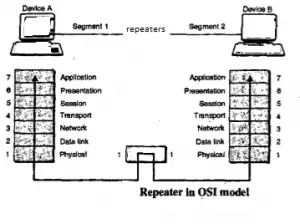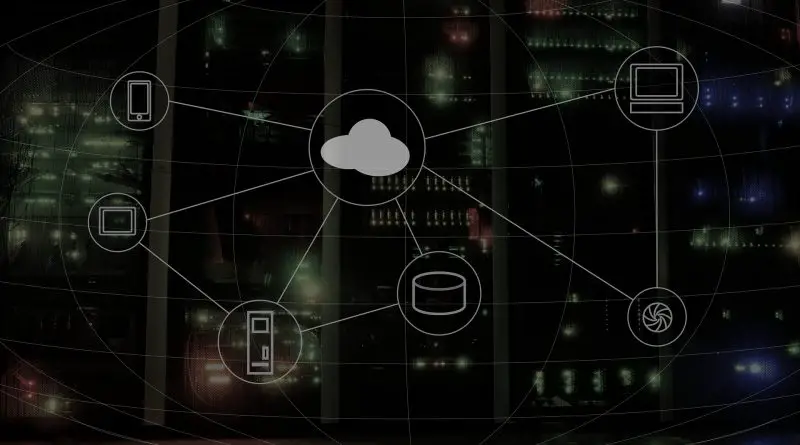Computer Network – Layered Architecture (OSI Model Introduction )
In the previous post, we have seen that a network can be classified based upon the manner in which components in the network configured (P2P and Client server network model) . Before we proceed to the different reference models, we should first understand the steps involved in data transmission in any network model.
For example, the task of sending an e-mail from any one point in the world to some other can be further broken into several tasks, each of these tasks performed by separate software. Each software generally uses the services of the other software (in a sequential pattern).
In the lowest layer, a specific signal, or any set of signals, is sent from the designated source computer to the destination computer. Basically we will understand how a well defined layered architecture is indeed an inevitable part of a successful network transmission model .
The concept of layers is also present in our daily life. So, let us understand this architecture in layman terms (with the help of a daily life example). Let us consider one scenario, say two friends who want to communicate by the means of a postal mail.
The process of sending any letter to a friend would be very much complicated if there were no assistance provided by the post office. In this case, we deal with a sender, a receiver, and also a carrier (transporter) that carries (moves) the letter forward. There is a complete structure (hierarchy) of the sequential tasks. Let us see functions performed by each of them in detail:
At Sender’s side
Now let us see the sequence of events taking place at the Sender’s site.
- Higher layer : Initially the sender first drafts the letter, but the letter in an envelope, then specifies the receiver and sender (source and destination) addresses and finally drops the letter in a mailbox.
- Middle layer: In this level, the letter is further collected by a letter carrier and then delivered it to the respective post office.
- Lower layer: At last , the letter is then sorted in the post office and then a carrier (transporter) transports the letter.
Work is done by Carrier:
The letter finally moves on its way to the respective recipient (destination) address. On it’s way to the destination (recipient’s local post office), the letter may further actually pass through a central office. Moreover, it may finally be transported by train, truck, boat, airplane or any combination of these.
At Receiver’s side:
- Lower layer: Now again the carrier first transports the letter to the respective post office (reverse activities will take place).
- Middle layer: Then the letter is further sorted and delivered to the required recipient’s (destination) mailbox.
- Higher layer: The receiver then finally collects the letter, and opens the envelope, and finally reads it.
Hierarchy and layered tasks :
There are precisely three different (dependent) activities happening at the sender’s side and the other three activities occurring at the receiver’s side.
The activity of transporting the letter in between the respective sender (source) and the receiver (destination) is then done (undertaken) by the transporter carrier. Now, we can say that each layer at the sending site further utilizes the services of the layer present immediately below it.
The sender from the upper layer generally utilizes the services furnished by the middle layer. The middle layer then finally uses the services of the lower layer. The lower layer normally (additionally) uses the services of the carrier ( transporter medium).
Protocols in Layered architecture
From the above example, you might already get some idea about the Layered architecture in network software. Further, an important point to be noted here is that the function and contents of each layer will differ network to network.
Any particular layer on one device(workstation) will communicate with the layer of any other device via a predefined set of protocols(rules).
Protocols are nothing but a set of agreements between any two communicating machines(about establishing, maintaining, and releasing the communication link).
To make this complete(complex) system of establishing and releasing the communication between the required machines , these set of protocols comes into picture. Hence a network architecture can be defined as a set of protocols that define the manner in which every layer is to function.
Due to segmentation (in layered structure), it is possible to break the difficult problems into simpler and smaller segments(tasks) .
How does Data transfer really takes place in Layered architecture?
Data transfer will take place in a sequential manner through different layers. The data (message packets) is passed on to lower layers until the lowest layer is reached.Below layer 1 lies the physical layer(medium) i.e. wire, coaxial cables etc through which data will propagate.
For the efficient transmission of data between the layers, we have interface between every layer. Interface basically defines the operation and services offered by the lower layer to the upper layer.
Service access points (SAPs)
These are available in between ‘n’ and ‘n+1’ layers . Each SAP has a unique address for its identification. Services are available at SAPs.

Interface Data Unit (IDU)
IDU mainly consists of ICI (Interface Control information) and SDU (Service data unit). For the efficient sharing of message communication between the ‘n’ and’ n+1′ layers, a pair of guidelines (rules) in regards to the interface should be present.
SDU is a part of IDU, and it is the data transferred through the network to the required peer entity and then upto the layer ‘n+1’ . Also , the ICI further contains the required control information necessary in order to assist the lower layer i.e. ‘layer n’ to do the appropriate job.
Protocol Data Unit(PDU)
To move the given SDU, the layer i.e ‘n’ entity has to split it into many smaller and compact segments. Segmentation is done in such a manner that each segment mainly consists of a header value and then delivered as an individual PDU such as a form of packet.
These PDU headers are then employed by the entities (peer elements) in order to implement their peer protocol. Some PDUs contain data while others contain control info. The headers will identify or differentiate the various kinds of PDUs.
Any layer can offer two types of services to the layer present above it:
- Connection oriented service
- Connectionless service
Connection oriented service
It is similar to the one in the telephone system. In this, a connection is first established , used, and finally released. The connection will act as a tube. The sender pushes bits from one end of the tube to the other end. The order generally preserved (order of bits remains the same here).
Connectionless service
It is similar to postal service. Each message carries the complete address of the destination. Each message routed independently from source to destination through the system. Order may or may not be preserved in the type of connection.
Quality of service
Each service in network connection is judged by the quality of service.Services further divided into two types :
- Reliable Service : This service will never lose data.This type of services generally associated with the receipt of acknowledgments from the receiver after the successful transmission of data. Transmission will be slower as compared to the below type.
- Unreliable Service : The services in which no acknowledgments are provided from the receiver to the sender are connectionless unreliable services . Applications that require faster transmission of data may use this type of service.
Having learned all the prerequisites(of layered networks) required to proceed further, we can now dig into our main topic i.e. the reference models.The two most important reference models are:
- The OSI reference model and
- The TCP/IP reference model
This layered architecture majorly dominated the data communications and the networking arena before the year 1990 was the Open Systems Interconnection (OSI) model. But this model wasn’t able to become the standard framework in networking.
The TCP/IP protocol model then finally became the dominant (widely used) architecture because it has been used and tested extensively in the Internet space , the OSI model was never completely implemented.See you soon in my next post with a detailed analysis of this reference model.So stay tuned….

Aric is a tech enthusiast , who love to write about the tech related products and ‘How To’ blogs . IT Engineer by profession , right now working in the Automation field in a Software product company . The other hobbies includes singing , trekking and writing blogs .




